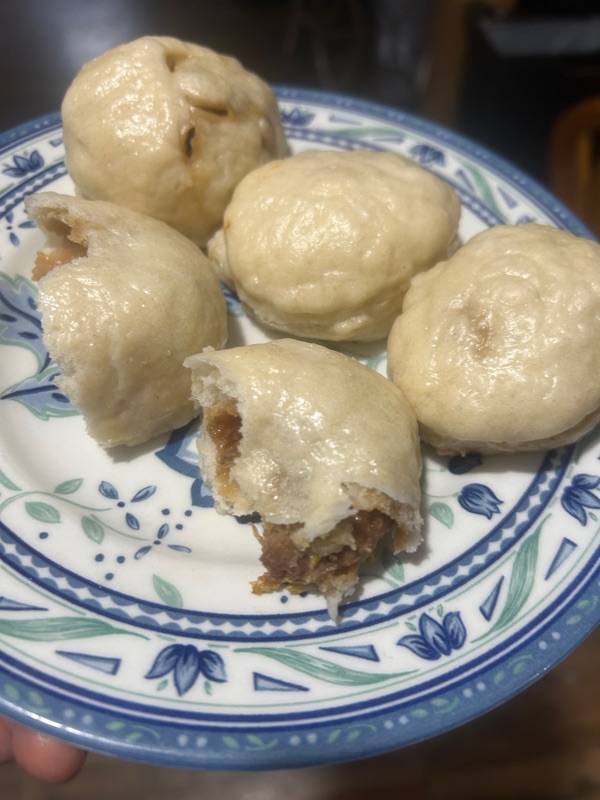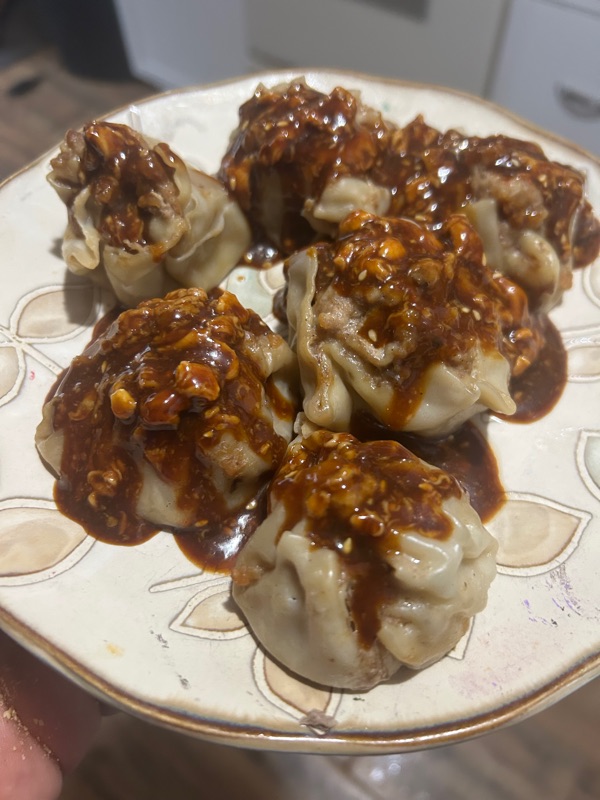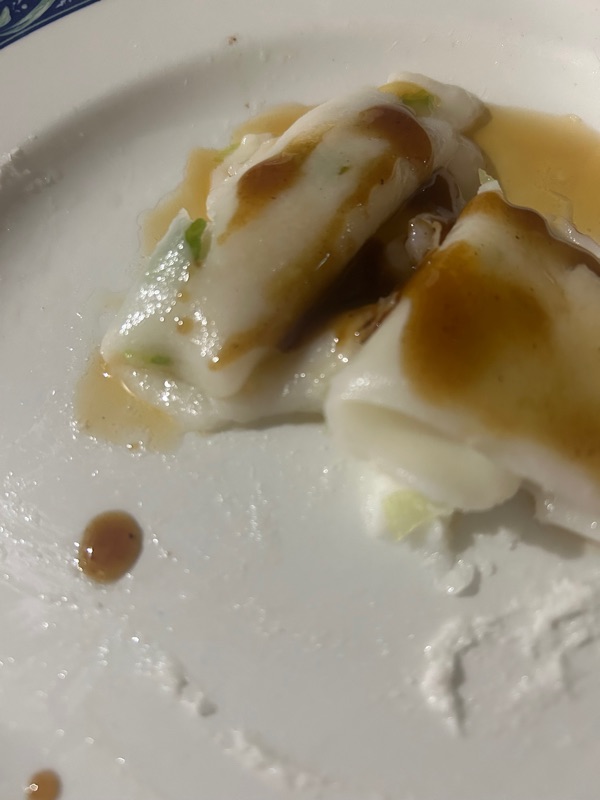China, Pt. 2 (Hong Kong): A Tale of Two Cities
China, Pt 2 (Hong Kong): A Tale of Two Cities
Yesterday, we tore through 20th-century Mainland China—Boxer fists, Shanghai riots, Mao’s march, Deng’s boom—dishes forged in peasant woks and rebel grease. Today, we shift south to Hong Kong, a Cantonese jewel that’s always danced to its own beat. It’s a Special Administrative Region under China’s “one country, two systems” title, a label it applied after 156 years as a British colony, handed back in 1997. Two cities in one: colonial scars, proletarian hustle, dim sum carts rolling past massive skyscrapers.
Once a small fisherman’s village, the British snatched it up in 1842 after the First Opium War. The Qing Dynasty were forced to give it away, and the foreign cash started flooding in. By the 20th century, it was one of the busiest ports in the East, with factories, docks, refugees running from wars and revolutions up North. Cantonese culture remains firmly entrenched on this island, with steam pots cooking up dim sum delights on every corner. Through it all, British suits or Party brass, Hong Kong has remained unique, and defiant. Forging a character not quite Chinese, but not quite European, Hong Kong stands apart.
The story of Hong Kong’s food is as much about the people as the dishes themselves. The rise of the industrial working class in the late 19th and early 20th centuries meant a thriving culture of street food. While colonialists and wealthy Chinese businessmen enjoyed French-inspired feasts, the city’s laborers turned to more affordable pleasures, dim sum. These were bite sized morsels often steamed on the go, and a taste of home for all the Southern Cantonese workers who migrated to Hong Kong to work.
Today we look at three dim sum classics, and the working class who shaped them. From riots against colonial authorities, to working class shanty towns looking to maintain their character as the sanitizing force of a “Bright new future” comes to tear the future away from those trying to scrabble together theirs, we look at how Hong Kong is the fault line between China and the lands beyond. Get your steam pot ready as we make baozi, shumai, and cheung fun to go.
Baozi (包子): Steaming Rage

In the early 1900s, as Hong Kong rapidly became an important port and industrial hub, it began to see migration from around China from both North and South. Teahouses—long a Southern Cantonese institution—began popping up across Hong Kong. But as migrants arrived from the North, these tea houses adapted, serving hearty wheat-based specialties like baozi. Baozi was a pork and cabbage stuffed steamed bun, perfect for workers on the go. Quick to prepare, but hearty and filling, baozi became the fuel that Hong Kong’s workers ran on.
But as baozi steam filled the teahouses, another kind of pressure was building—one of unrest. Chinese workers, the backbone of the city’s shipping industry, found themselves paid a fraction of what European workers earned. Chinese work crews could often expect 20-50% less than Europeans for the same work. With the backdrop of WWI unrest, global labor movements, and Mainland China’s own United Front, Hong Kong workers began to stand up for themselves. Union leaders would meet in teahouses, which were often run by the union, hammering out plans over baozi. Baozi was more than just sustenance, it became fuel for resistance, and the baozi dens hubs for political discussion and organizing. In January of 1922 the Hong Kong Seamen’s Union led by Su Zhaozheng demanded equal pay for Chinese workers, the right to unionize, and an end to brutal working conditions. Britain’s response was to fire the union leaders.
This led to 15,000 Chinese seamen walking out, paralyzing the port city. Legend has it that strikers slipped secret messages inside baozi, passing them hand to hand to outmaneuver colonial authorities. By February, this number swelled to 100,000, becoming China’s first General Strike. Strikers were beaten and arrested by colonial police, but they had support from the mainland United Front of the Kuomintang and Communists. On March 8, 1922 Britain capitulated, with a 25-30% wage increase, and recognition of the union. This was just the first taste of the labor battles to come. Over steaming baozi and whispered strategies, Hong Kong’s workers had shown their strength—and they would not be silenced.
Sidenote, I’ve made Baozi before. Prior to making this blog, steaming dim sum foods was one thing I did frequently. I’ll admit it—I used to cheat and use Pillsbury Instant Biscuit dough. But this time, I went all in and made the dough from scratch. No shortcuts. Just flour, yeast, and patience. It is essential however, you either get yourself a steampot or bamboo steamer.
Ingredients
Dough:
• 3 cups all-purpose flour
• 1 tsp instant yeast
• 1 tbsp sugar
• 1 tsp baking powder
• ¾ cup warm water
• 1 tbsp oil
Filling:
• 250g (½ lb) ground pork
• 1 tbsp soy sauce
• 1 tbsp oyster sauce
• 1 tsp sesame oil
• 1 tsp sugar
• 1 tbsp cornstarch
• ½ cup chopped cabbage or scallions
• 1 tsp ginger (minced)
Instructions
1. Make dough: Mix flour, yeast, sugar, and baking powder. Add water and oil, knead until smooth. Let rise 1 hour.
2. Prepare filling: Cook pork with sauces, sesame oil, sugar, and cornstarch. Add cabbage & ginger. Cool.
3. Shape buns: Roll dough into a log, cut into 12 pieces. Flatten each, add filling, pleat edges, and seal.
4. Steam: Place buns on parchment in a steamer, rest 15 mins, then steam 15 mins over boiling water.
5. Serve: Hot, with spicy Sichuan chili oil dip (below)—eat like a striker plotting the next move.
Spicy Sichuan Chili Oil Dip
(Great for Baozi, especially meat-filled ones!)
• 2 tbsp chili oil (with sediment for texture)
• 1 tbsp soy sauce
• 1 tbsp rice vinegar
• ½ tsp Sichuan peppercorn powder (for that tingly málà kick)
• 1 tsp hoisin sauce (for sweetness)
• 1 scallion, finely chopped
Shumai (燒賣): Dim Sum of Discontent

Hong Kong remained a major trading hub, remaining that way even through global depression. Labor grew bolder, but the British continued to suppress them as much as they could. During WWII, it was occupied by the Japanese, but quickly bounced back post-war. As the Mainland was rocked by Civil War and revolution, refugees flocked to Hong Kong, and the population almost quadrupled. Factories boomed in the 50s and 60s, and much like baozi became the food of dockworkers, a different tea house staple became the food of factory workers, the open top dumpling known as shumai.
Originally from Mongolia, the open top meant quick cooking. Cantonese tea houses in the South had been selling them for centuries. However, they were much more conducive to “to go” carts than baozi was, and you would see baskets full of the bite sized snack being steamed outside of every factory. As the Mainland became a communist People’s Republic, working class strikes became increasingly influenced by communist ideas. Dim Sum carts became places to exchange ideas, and much like the baozi was used in 1922 to exchange messages in legend, rumors persist that dim sum baskets were used to pass messages between factory workers.
As the Cultural Revolution took hold in Mainland China, the youth of Hong Kong answered the call. Local communists coordinated with the Mainland Communist Party to spread the message amongst the youth. The British were becoming increasingly unpopular, and the youth took the Cultural Revolution to the streets of Hong Kong. In 1967, during a factory strike at an artificial flower factory, the simmering tensions exploded, culminating in the largest scale anti-colonial riots east Asia had seen since 1899’s Boxer Rebellion in Northern China. These protests became violent fast, with homemade bombs being thrown, British being attacked, and Hong Kong burning.
As factory workers fought for better conditions, their daily rituals—like grabbing shumai from steaming carts—became intertwined with resistance. These bustling dim sum stalls were more than just food stops; they became meeting points where revolutionary ideas simmered alongside dumplings. Shumai’s small size and portability made them the ideal sustenance for protesters spending long hours in the streets. As workers snacked on shumai in between clashes, the British colonial authorities sustained a massive black eye. The British would soon negotiate an end to their possession of Hong Kong with the Chinese government, setting 1997 as the date of its return. In an effort to quell further unrest, they also implemented labor reforms to ease tensions. Shumai, once the food of factory workers, would become a staple in Cantonese cuisine served around the world.
Shumai is easy to make, just make sure you use your steamer! The only difficulty is in creating the classic “open top” shape using store bought won ton wrappers. However, they are good closed too!
Ingredients
Wrapper:
• 1 package round dumpling or wonton wrappers
Filling:
• 250g (½ lb) ground pork
• 150g (5 oz) shrimp, peeled, deveined, and minced
• 4-5 dried shiitake mushrooms (soaked & finely chopped)
• 1 tbsp soy sauce
• 1 tbsp oyster sauce
• 1 tsp sesame oil
• 1 tsp sugar
• 1 tbsp cornstarch
• ½ tsp white pepper
• 1 small carrot (grated, for garnish)
Instructions
1. Mix filling: Combine pork, shrimp, mushrooms, soy sauce, oyster sauce, sesame oil, sugar, cornstarch, and pepper. Stir until sticky.
2. Assemble: Place a wrapper in your palm, add 1 tbsp filling, and gently shape into a cup. Smooth the top and garnish with grated carrot.
3. Steam: Line a steamer with parchment, place shu mai inside, and steam for 8-10 mins over boiling water.
4. Serve: Hot, with soy-vinegar dip (below)—snack like a ’67 rioter.
Dipping Sauce
(Pairs best with Shu Mai)
• 3 tbsp light soy sauce (or tamari for GF)
• 1 tbsp Chinkiang black vinegar (or balsamic in a pinch)
• 1 tsp sesame oil
• 1 tsp sugar (or honey)
• 1 clove garlic, minced (optional)
• ½ tsp fresh ginger, grated (optional)
• Red chili flakes or sliced bird’s eye chili to taste
• Whisk all ingredients until sugar dissolves. Let sit 10 mins for flavors to meld.
Sweet-and-Savory Hoisin Peanut Sauce
(Ideal as a shu mai glaze)
• 3 tbsp hoisin sauce
• 1 tbsp creamy peanut butter (or tahini for nut-free)
• 1 tbsp warm water (to thin)
• 1 tsp rice vinegar
• 1 tsp toasted sesame seeds
• Crushed peanuts for garnish
Cheung Fun (肠粉): Kowloon’s Crepes

As Hong Kong continued to develop its own distinct identity, and the British negotiated the sunset of their rule for 1997, Hong Kongers began to embrace the future with anticipation and anxiety. In 1984, The Sino-British Joint Declaration was made, formalizing the transfer. This would come only a few years before the Tiananmen Square Massacre, which only added to people’s anxiety. However, Hong Kong continued to bustle like there was no tomorrow.
After years of anarchic conditions, certain neighborhoods would reflect the chaotic, urban anarchy of Hong Kong more than others. None reflected this moreso than the Kowloon Walled City, a turn of century fortress converted into a shantytown, technically outside the jurisdiction of both the British government and PRC. This sprawling structure became a cyberpunk fortress, with unlicensed dentists, cheap eats, and Neon-lit flophouses popping up on every crowded floor. Unlicensed street vendors dabbled in a unique food culture. As their food stalls operated at breakneck speed, creating flavors as chaotic and vibrant as the city itself. Among the most beloved street foods of Kowloon Walled City was cheung fun, a savory rice noodle roll that was as much a reflection of Hong Kong’s urban pulse as it was of the ingenuity of the working class.
Cheung Fun (肠粉), or “rice noodle rolls,” became a favorite snack for late-night diners and busy workers alike. The delicate rice noodle sheets were thin, almost like a crepe, rolled up with savory fillings such as barbecued pork, shrimp, or beef, and often topped with a sweet soy sauce. Served in a steaming basket, cheung fun was fast, flavorful, and a perfect bite to grab on the go—a true testament to Hong Kong’s bustling street food scene.
The popularity of cheung fun grew throughout the 20th century, but it was in the Walled City’s alleyways that the dish became iconic. Vendors quickly rolled up the dough, filled it with whatever was available, and served it with a drizzle of soy sauce, sesame oil, and perhaps a sprinkling of sesame seeds. This humble dish was served at all hours of the day, and it represented the resilience and adaptability of a city that constantly reinvented itself in the face of both colonial rule and later, the pressures of its reunification with China.
Of course, the Hong Kong authorities wanted to present a nice, squeaky clean image for the handover. Kowloon Walled City was deemed dangerous, and slated for demolition. As the construction cranes moved in, the working class residents of that neighborhood realized their precarious position caught between two worlds.
In the end, the demolition of Kowloon Walled City in 1993 closed the chapter on one of Hong Kong’s wildest experiments in urban survival. Its residents were scattered, the walls came down, but the flavor stayed. Cheung fun lived on—not just as a street snack, but as a symbol of grit, hustle, and improvisation. Slippery, savory, and a little chaotic, it’s the taste of a city that made its own rules. You can still find it today, steaming on corner carts and dim sum tables, quietly carrying the memory of a place that refused to be boxed in. Kowloon’s crepes didn’t disappear—they just rolled on.
I tried my own hand at keeping Kowloon Walled City alive. This is a very fun yet frustrating dish to make. One thing I will say is, get a pan with a completely flat bottom! No divits or bumps. You want something completely flat as you will need to fold it over in order to roll it up, and you don’t want the batter to pool.
Ingredients
Batter:
• 1 cup rice flour
• 2 tbsp wheat starch (or cornstarch)
• 1 tbsp tapioca starch
• 2 cups water
• ½ tsp salt
• 1 tsp oil
Filling (Optional):
• Shrimp, BBQ pork, or sliced scallions
Sauce:
• 2 tbsp soy sauce
• 1 tbsp oyster sauce
• 1 tsp sugar
• 1 tbsp water
• 1 tsp sesame oil
Instructions
1. Mix batter: Whisk all batter ingredients until smooth.
2. Steam: Lightly oil a tray, pour a thin layer of batter, add filling (if using), and steam 3-4 mins until set.
3. Roll: Use a spatula to gently roll the noodle sheet.
4. Serve: Drizzle with sauce and garnish with sesame seeds—like




Comments
Post a Comment